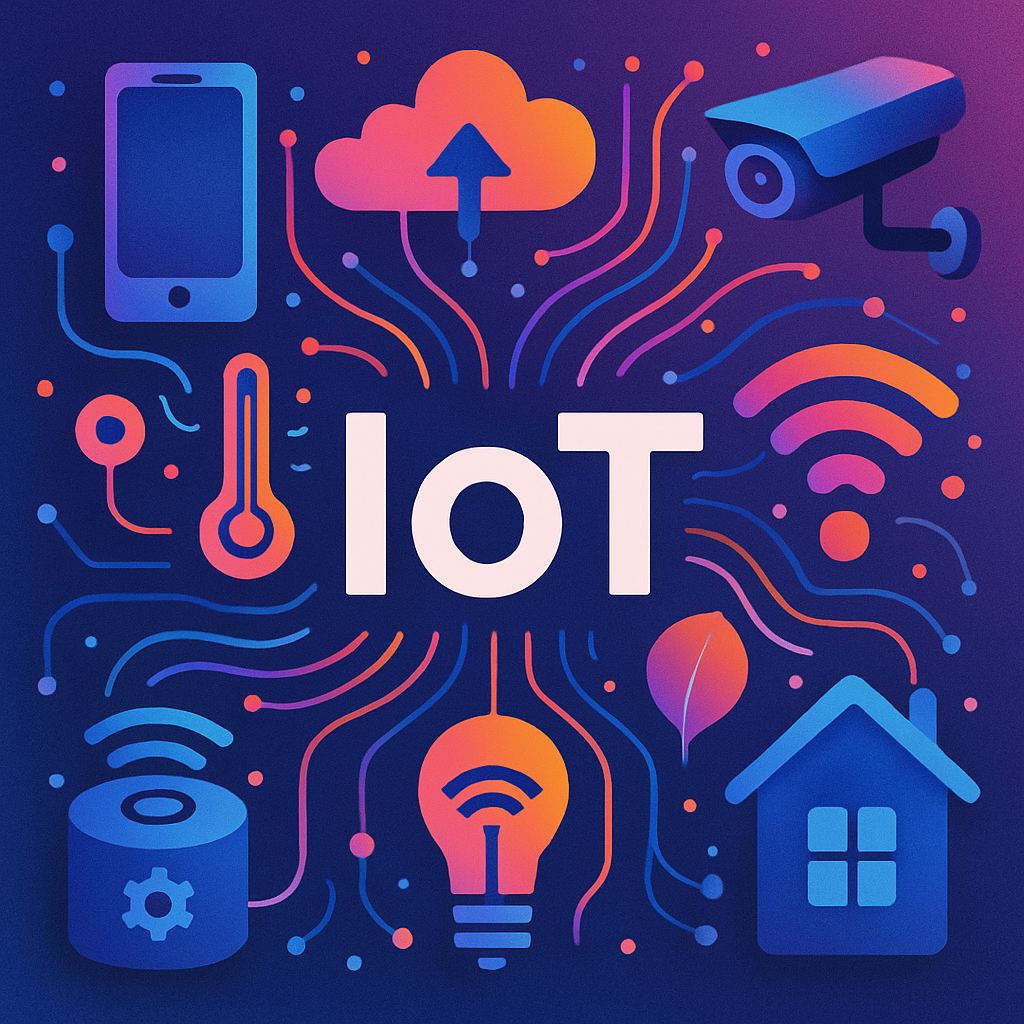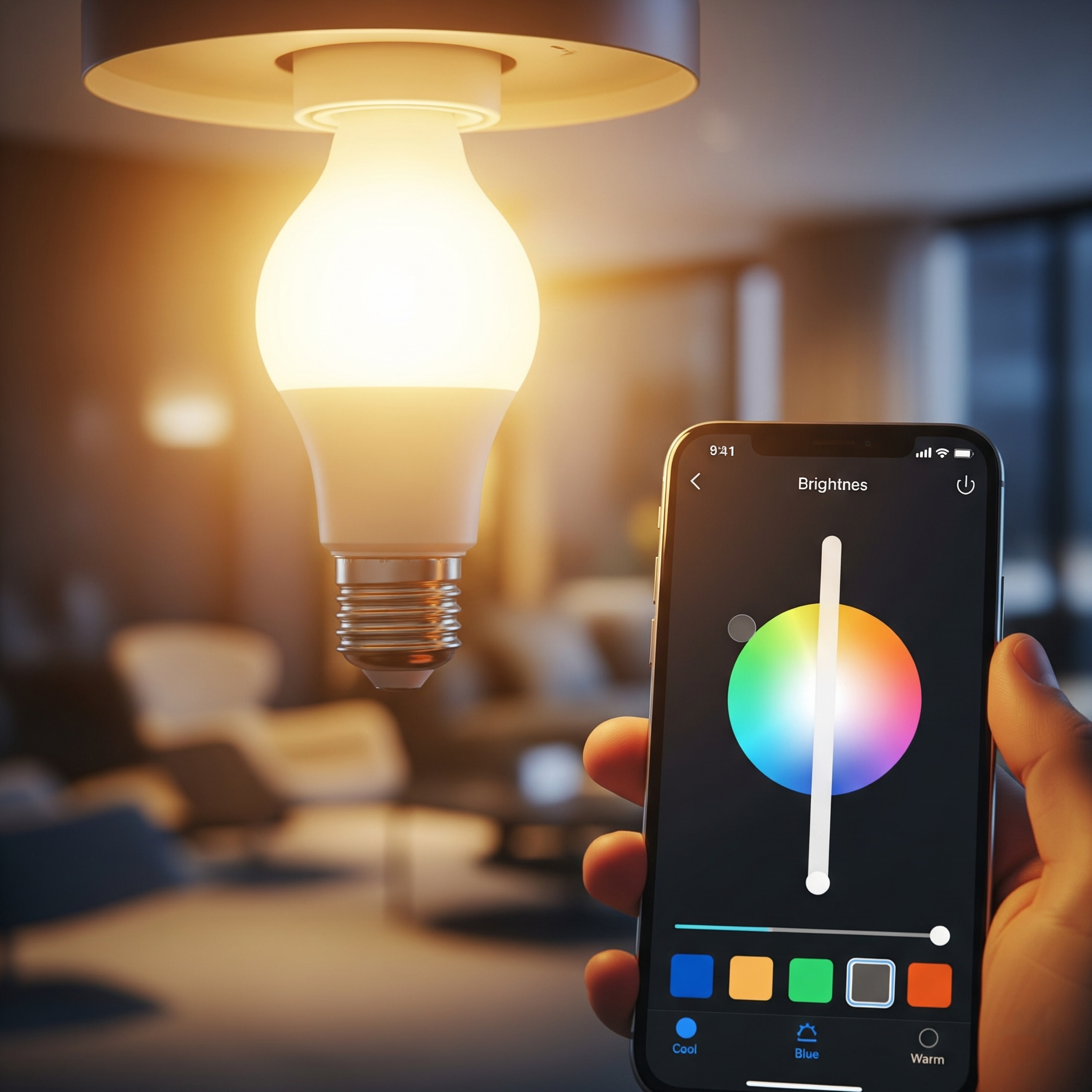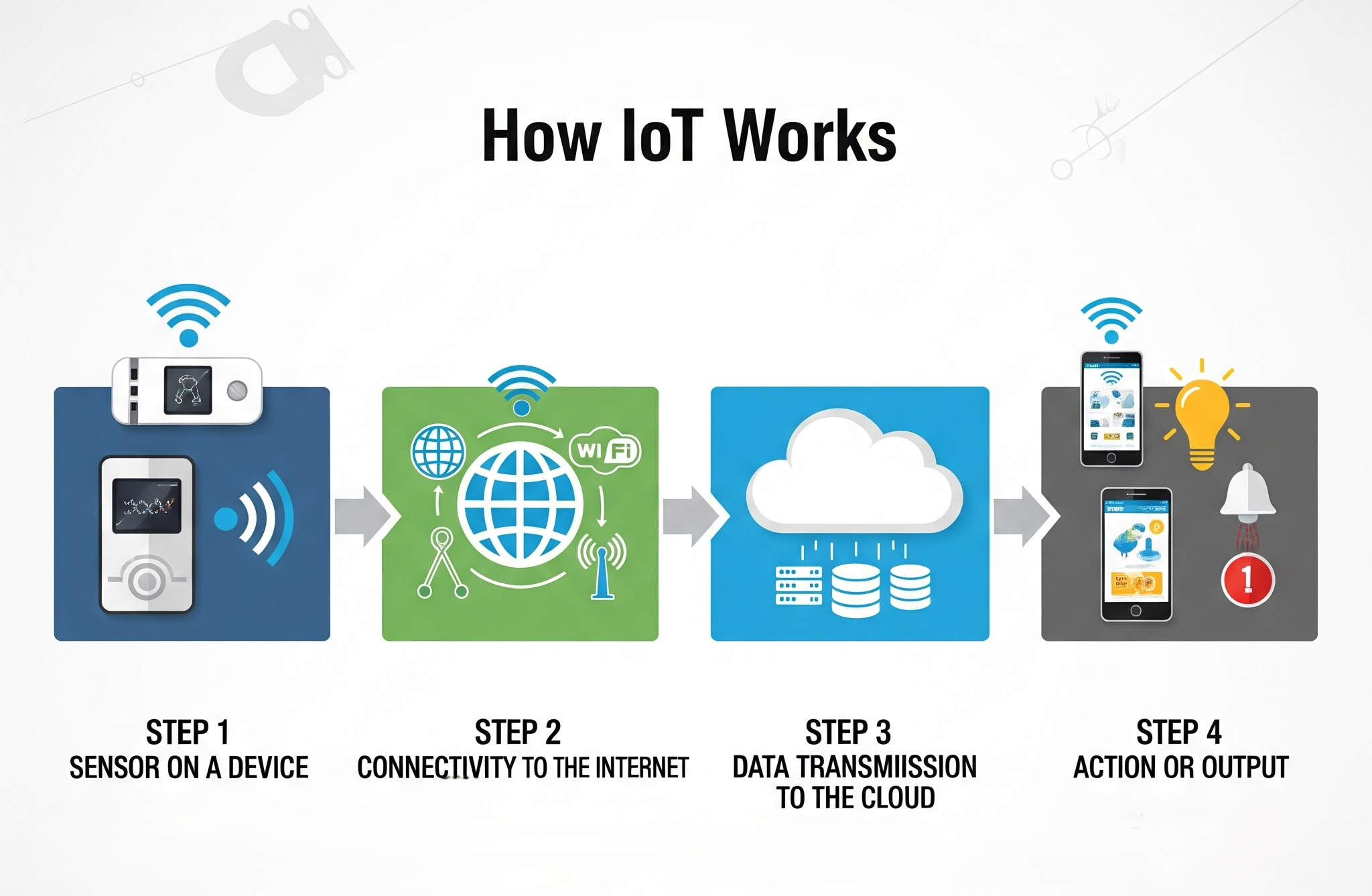Have you ever turned off your bedroom light using your mobile phone? Or asked Alexa to play your favorite playlist while cooking? If yes, then you’ve already used IoT, also known as the Internet of Things. But what exactly is IoT? Why is everyone talking about it?
In this blog, I’ll explain IoT in the simplest possible way, with daily life examples, zero technical jargon, and easy-to-understand comparisons. Even if you are not from a tech background, you will understand this concept perfectly.
What is IoT?
Let’s start with the full form.
IoT stands for "Internet of Things".
In simple terms, IoT means connecting physical objects (like lights, fans, watches, fridges, etc.) to the internet, so that they can send or receive data without needing human help every time.
It’s like giving your devices a brain and internet connection, so they can "talk", "think", and "act" smartly.
Instead of you operating every device manually, IoT lets your devices communicate and make life easier for you.
Example: A Simple Light Bulb
Let’s understand this better with a very common example: a light bulb.
-
A normal bulb is just an on/off device. You press a switch, and it turns on. That’s it.
-
But a smart bulb is different. You connect it to your home Wi-Fi. Now you can control it from your phone or even with your voice using Alexa or Google Assistant.
Even when you are not at home, you can turn the light on or off.
You can schedule it to turn off automatically at 10 PM.
This is what IoT does, it adds intelligence and connectivity to normal devices.
Real-Life Examples of IoT Devices at Home
Here are some everyday items in a smart home that use IoT:
-
Smart Speakers (like Alexa or Google Home): These are voice-controlled devices that let you ask questions, play music, control other smart gadgets, set alarms, and more. They connect to the internet to understand your commands and respond intelligently.
-
Smart ACs: These air conditioners can automatically adjust the temperature based on your preferences. You can switch them on or off remotely through your smartphone even if you are not at home.
-
Smart Doorbells (like Ring): These have cameras. If someone rings the bell, you can see them on your phone even if you are in another city. You can even talk to the visitor from your mobile.
-
Smart Watches (like Fitbit or Apple Watch): These track your steps, heart rate, sleep, and even oxygen levels. The data is sent to apps on your mobile through Bluetooth or Wi-Fi.
-
Smart Kitchen Appliances: Some modern ovens, coffee machines, and even refrigerators can connect to Wi-Fi and perform tasks based on app commands.
So, next time you control something through your mobile or voice, just know, that’s IoT in action!
How Does IoT Work?
Let’s simplify the working of IoT in four basic steps:
-
Device or Sensor : This is the physical thing like a smart bulb, smartwatch, or doorbell that senses something or takes action.
-
Connectivity: This is how the device connects to the internet. It could be through Wi-Fi, Bluetooth, mobile data (4G/5G), or other protocols.
-
Data Transmission: Once connected, the device sends the data (like your step count or room temperature) to a cloud or app where it’s stored and processed.
-
Action/Output: Finally, based on the data, an action is taken. It could be displaying a message on your phone, turning off the light, or setting off an alarm.
This whole process happens in seconds and usually without needing your constant attention.
IoT Outside the Home
IoT is not just limited to homes. It is being used in many industries around us. Let me give you a few examples:
1. Healthcare
IoT is helping hospitals and doctors monitor patients remotely. Devices like smart heart rate monitors, oxygen level trackers, and connected insulin pumps send real-time health data to doctors. This helps in giving quick treatment, especially in emergencies.
2. Transportation
Modern cars have become smart. Cars like Tesla can park themselves, update software through the internet, and give live traffic suggestions. Some cities have smart traffic systems that adjust signals based on traffic volume using sensors.
3. Industry and Factories
In big factories, machines are now connected to sensors that can detect issues or send alerts when maintenance is needed. This helps prevent breakdowns and improves efficiency.
4. Agriculture
Smart farming is a new concept where soil sensors tell farmers when to water crops or add fertilizers. Drones are used to check crop health. All this is possible due to IoT.
Why is IoT So Popular?
There are many reasons why IoT is becoming popular:
-
Saves Time: You don’t have to manually do things like switching off lights or adjusting temperature. Devices do it for you.
-
Saves Energy: Smart devices work more efficiently and reduce electricity wastage. For example, a smart fan turns off automatically when nobody is in the room.
-
Improves Safety: Smart door locks, security cameras, and fire sensors alert you immediately if anything unusual happens.
-
Better Health Monitoring: Fitness bands, smartwatches, and health monitors help people track and improve their health without visiting a doctor daily.
-
Convenient Lifestyle: You can control everything from your phone, lights, fan, TV, AC, fridge by making life more comfortable.
Challenges and Risks of IoT
While IoT makes our life easier, it also brings a few challenges we need to be aware of:
1. Privacy and Security Risks
Since IoT devices are connected to the internet, they can be hacked if not protected well. A hacker could gain access to your home camera or personal health data if proper security is not in place.
2. Dependence on Internet
Most IoT devices need a working internet connection. If the Wi-Fi goes down, your smart devices may not work.
3. Compatibility Issues
Not all IoT devices work well with each other. For example, a smart bulb from one company may not support Alexa or Google Home if it's not designed to.
4. Power Consumption
Even though they are smart, IoT devices consume power. And if you have too many of them, it could affect your electricity usage.
Future of IoT
The future with IoT looks super exciting. Here's what we can expect in the coming years:
-
Smart Cities: Streetlights that turn on only when needed, garbage bins that alert the municipality when full, and sensors that track pollution levels in real-time.
-
Smarter Vehicles: Cars that talk to each other to avoid accidents, find empty parking spots, or automatically call emergency services after a crash.
-
Voice-Controlled Everything: From cooking appliances to bathroom mirrors, everything in your home will listen to your voice commands.
-
Personal Assistants Everywhere: Virtual assistants will not only play music but also help you shop, manage calendars, and even suggest food based on your mood!



Comments
Post a Comment